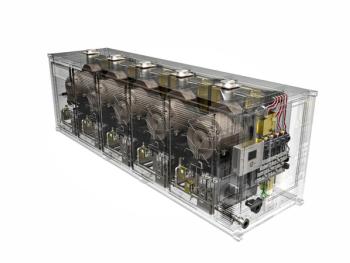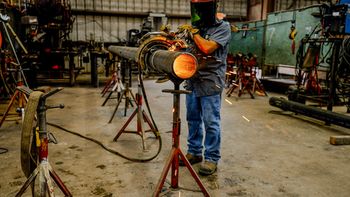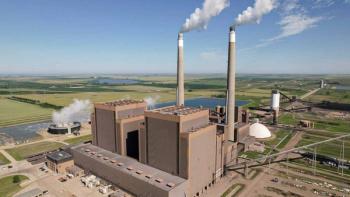
NATURE'S GIFTS FOR POWER GENERATION
A common, somewhat disrespectful, saying — often erroneously attributed to Ben Franklin — is “Beer is proof that God loves us and wants us to be happy.”
It could be taken one step further: “God gave us a liver which is proof that God wants us to drink beer.” (Or, by inverse conjecture, given that we have a liver and drink beer, there must be a deity.)
Similarly, we can talk about many other of earth’s natural circumstances that happen to be perfectly provided for mankind’s existence and survival.
How does that relate to turbomachinery and our monthly Myth Buster column?
Air and water. We take them for granted in our daily lives. But from a power generation perspective, they are nearly perfect (if not absolutely perfect) working fluids for our heat engines. Through their use in gas turbines and steam turbines, they are responsible for over 90% of the world’s electric power generation.
But over the last few years, attempts have been made by reputable scientists and engineers (including yours truly) to bad mouth them and paint them as imperfect fluids for the necessities of modern power generation.
Many bright inventors are in the pursuit of more advanced thermal fluids, such as supercritical carbon dioxide, organic hydrocarbons liquids, such as pentane, naphtha, acetone, and even some noble gases, such as Argon or Helium, with the aim of squeezing a last few fractions of efficiency out of heat engine thermodynamic cycles.
So, I would like to come to the defense air and water. They are very basic, but wonderfully common, and easy to use. Everyone knows how to handle them, we inhale and drink them daily, and nobody is afraid of them. In my seldom humble opinion, air and water still represent by far the best option for a working fluid in power plants.
Allow me to point out the obvious: Water and air are commonly available. They are clean, cheap, and definitely not toxic. Plant machinery, valves, vessels, heat exchangers, and so forth, have evolved over centuries into a highly efficient symbiosis for power generation.
From a thermodynamic perspective both water and air have good heat capacity and heat transfer properties, specific heats, and manageable densities over wide temperature and pressure ranges. The critical point of water is nicely matched for many available Rankine cycle heat sources. And for Brayton cycles, air has steep and flat isentropic lines at low and high pressures respectively, just what thermodynamicists want.
There are other advantages of air and water, such as easily predictable near-linear behavior of most physical properties. This makes engineering that uses simple equations of state accurate and reliable.
But most important is this fact: By far the most highly efficient power plants by a significant margin compared to any other technology are gas turbine combined cycle power plants that use both air and water in their Brayton and bottoming Rankine cycles.
Efficiencies in excess of 63% have been demonstrated, which is approximately 20% higher than what has been demonstrated with any other working fluid. Combined cycle power plants also have demonstrated the lowest installed costs and the highest operational fleet reliability of any power generation technology.
Few of the proposed other technologies that are trying to compete with air and steam cycles have been demonstrated under real-world conditions, and none are fully commercialized. They often utilize costly, asphyxiating, explosive, poisonous, corrosive, ozone depleting, flammable, toxic, and sometimes carcinogenic working fluids.
But they have come nowhere near to the plant efficiency, reliability, commercial availability, and low operating costs already demonstrated by conventional air and water.
Safety systems, fluid handling, pipe design, materials properties, and engineering operation of these novel fluids are far from being established. We often do not even know their basic fluid properties, such as viscosity, specific heats, speed of sounds, enthalpy, entropy, and so on.
One last note: We certainly do not wish to discourage active investigation and research into other fluids and complex advanced power cycles. But nature, or a deity if you prefer, gave us air and water.
They happen to be perfect for electric power generation. So far, none of the other fluids that have been tried have really panned out. None have created a serious competitive threat to air and water. And maybe as a final philosophical conjecture: Nature gave us good air and water to make fine beer … and produce excellent electricity. ■
Newsletter
Power your knowledge with the latest in turbine technology, engineering advances, and energy solutions—subscribe to Turbomachinery International today.




